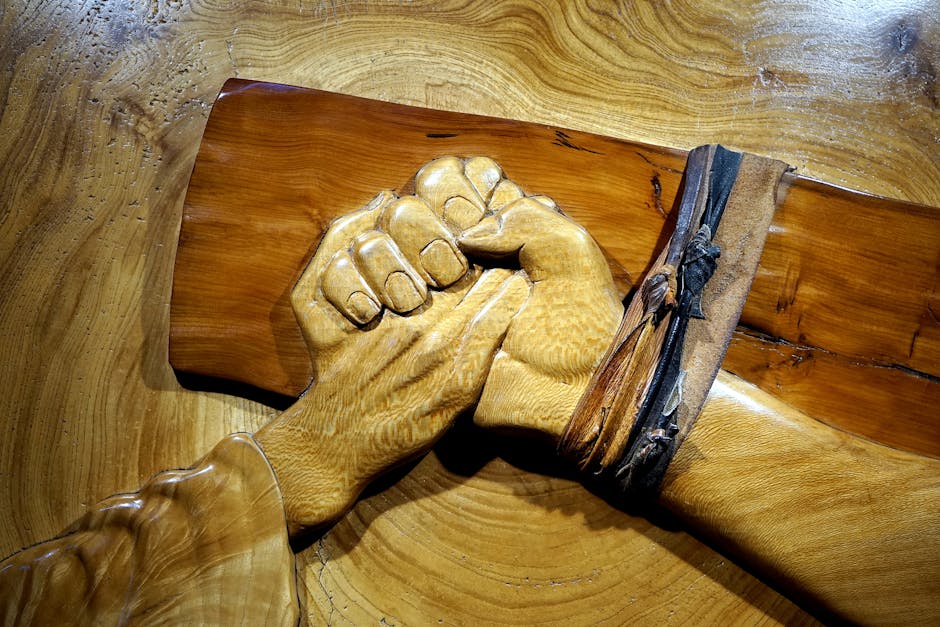Table of Contents
The History of Taekwondo
Taekwondo is a martial art that originated in Korea. The name Taekwondo is made up of three parts: “Tae”, meaning “foot,” “Kwon”, meaning “fist,” and “Do”, meaning “way” or “discipline.”
Taekwondo has its roots in the traditional Korean martial arts of Tae Kyon and subak, as well as influences from karate and Chinese martial arts. It began to develop into a distinct martial art in the 1940s and 1950s, with the formation of the Korean Taekwondo Association in 1959.
In the following years, Taekwondo rapidly gained popularity in South Korea and spread to other parts of the world. In 1972, Taekwondo was recognized by the International Olympic Committee as an official Olympic sport.
Taekwondo is known for its dynamic and powerful kicking techniques and focus on speed and agility. It also incorporates hand strikes and joint locks and emphasizes the development of the whole person, including physical, mental, and spiritual aspects.
Today, Taekwondo is widely practised worldwide, with millions of practitioners of all ages and abilities. It is a popular form of exercise and self-defence, and it is also a competitive sport. It is one of the most popular martial arts in the world, and it’s not limited to just self-defence; it also includes discipline, self-control, and respect.
In conclusion, Taekwondo is a martial art with a rich history and culture, and it continues to evolve and adapt to the changing world. Whether for fitness, self-defence, or competition, it offers something for everyone.
The Evolution of Taekwondo
Taekwondo is a martial art that has undergone significant evolution since its early origins in ancient Korean martial arts. With its focus on dynamic and powerful kicking techniques, it has become one of the most popular martial arts in the world.
The origins of Taekwondo can be traced back to the traditional Korean martial arts of taekkyeon and subak, primarily focused on foot techniques and hand strikes. These martial arts were passed down through generations but were not widely practised outside Korea until the 20th century.
In the 1940s and 1950s, a group of martial arts practitioners in South Korea began to develop a new martial art that incorporated elements of taekkyeon and subak, as well as influences from karate and Chinese martial arts. This contemporary martial art was called Taekwondo and began to gain popularity in South Korea in the following years.
In the 1960s, Taekwondo began to spread to other parts of the world, with the formation of national Taekwondo associations and the first international Taekwondo tournaments. In 1972, Taekwondo was recognized by the International Olympic Committee as an official Olympic sport, which helped to increase its popularity and visibility further.
As Taekwondo grew in popularity, it also began to evolve and adapt to the changing world. The World Taekwondo Federation (WTF) was established in 1973 to govern the sport worldwide, and it was later renamed World Taekwondo (WT) in 2017. In the 1980s and 1990s, new rules and regulations were introduced to make the sport safer and fairer.
In recent years, there has been a growing emphasis on the sport’s educational and cultural aspects, focusing on developing the whole person, including physical, mental, and spiritual aspects. The sport also continues to evolve, with new techniques and training methods being developed to improve the performance of athletes and make the sport more exciting for spectators.
In addition to the WTF/WT, there is another Taekwondo branch called the International Taekwon-Do Federation (ITF), which was formed in 1966 and focused on the traditional side of Taekwondo. ITF has different rules and techniques from the Olympic-oriented WTF/WT.
In conclusion, Taekwondo has come a long way since its origins in ancient Korean martial arts. It has evolved and adapted to the changing world, becoming a dynamic and exciting sport millions worldwide enjoy. Today, it continues to grow with new techniques and training methods and an emphasis on its educational and cultural aspects. The sport has also been split into two main branches, the sport-oriented WTF/WT and the traditionally oriented ITF, with specific rules and regulations. With its rich history and culture, Taekwondo remains a beloved martial art that offers something for everyone.
The Culture of Taekwondo
Taekwondo is a martial art and culture with customs, values, and traditions. These elements are essential to the practice and make Taekwondo a unique and meaningful discipline for its practitioners.
One of the most fundamental aspects of the culture of Taekwondo is respect. This is reflected in the traditional bow, performed at the beginning and end of each class and when entering and leaving the training area. The projection shows respect for the instructor, fellow practitioners, and the art itself. Care is also emphasized in how practitioners address each other, using formal titles such as “sir” or “ma’am.”
Another critical aspect of the culture of Taekwondo is discipline. Practitioners must adhere to a strict code of conduct in and out of the training area. This includes being punctual to class, maintaining a clean and organized training area, and practising self-control in all aspects of life.
The culture of Taekwondo also includes a focus on personal development and self-improvement. Practitioners are encouraged to set goals and work towards them, both in terms of physical progress and in terms of personal growth. This is reflected in traditional Korean ranking systems, in which practitioners progress through different coloured belts, each representing an extra level of skill and understanding.
Furthermore, the culture of Taekwondo also includes a strong sense of community. Practitioners form close bonds with fellow students and instructors and often participate in group activities and events outside the training area.
In addition to the above, the culture of Taekwondo also includes an emphasis on traditional Korean values such as humility, honesty, and perseverance. These values are essential not only in the training and development of the practitioners but also in shaping their overall character and moral compass.
In conclusion, the culture of Taekwondo is a rich and meaningful aspect of the practice. It includes respect, discipline, personal development, community, and traditional Korean values. These elements are integral to the course and make Taekwondo a unique and valuable field for its practitioners.
Important Taekwondo Dates
March 3, 1979- The International Federation of Taekwondo (IFTD) is founded in Switzerland as the World Taekwondo Union (WTM).
August 2, 1982 – WTF receives its full membership status from IFTD.
May 24, 1984 – For their contributions to Taekwondo, Robert Lee and Muhammed Ali were awarded the Grand Master title by IFTD at an event held in Tokyo, Japan.
November 5, 1985 – The first-ever world championship for men under 70 kg takes place in Seoul, Korea.
June 6, 1986 – The first ever women’s world championships occur in Paris, France.
December 9, 1987 – The second edition of the men’s under 70 kg championship is hosted by South Korea, with Masayuki Sakai winning gold.
April 13, 1988 – The third men’s under 80 kg championship is also hosted by South Korea, but this time Kyung Jin Kim won the gold medal.
July 15, 1989 – The open weight category was introduced for all events except the traditional sparring match at the inaugural World Combat Games.
October 19, 1990 – Due to a lack of interest, the open-weight combat sports are dropped after one year.
March 21, 1991 – The lightweight division is reintroduced into the games following several requests. It would later become popularized as a bantamweight.
Famous Taekwondo Events
Taekwondo is a popular and dynamic martial art with many exciting events and competitions worldwide. Some of the most famous and prestigious events in the sport include:
The World Taekwondo Championships: This is the premier event for the sport and is organized by the World Taekwondo (WT) and held every two years. The tournament features the best taekwondo athletes worldwide competing in various weight categories.
The Olympic Games: Taekwondo has been an Olympic sport since the 2000 Sydney Games and the Olympic Taekwondo competition is considered one of the most prestigious events in the sport. The tournament features the best taekwondo athletes worldwide competing for gold medals in various weight categories.
The World Taekwondo Grand-Prix Series is a series of international events organized by the World Taekwondo (WT) and held annually. The series features top-level taekwondo athletes worldwide competing in various weight categories.
The World Taekwondo President’s Cup: This event is organized by the World Taekwondo (WT) and is held annually. The tournament features top-level taekwondo athletes worldwide competing in various weight categories.
The World Taekwondo Poomsae Championships: This is an event organized by the World Taekwondo (WT) and held annually. The tournament features athletes performing poomsae, a form of Taekwondo that emphasizes the technical and artistic aspects of the sport.
The World Taekwondo Hanmadang is an event organized by the International Taekwon-Do Federation (ITF) and held annually. The tournament features top-level taekwondo athletes from around the world competing in various weight categories and traditional forms of Taekwondo.
These are just a few of the many exciting events that take place in the world of Taekwondo. Each event features the best taekwondo athletes from around the world competing at the highest level, and they all showcase the dynamic and exciting nature of the sport.
In conclusion, Taekwondo events are an exciting and dynamic aspect of the sport, featuring the best taekwondo athletes from around the world competing at the highest level. From the World Taekwondo Championship to the Olympic Games, these events provide thrilling entertainment and showcase the dynamic and exciting nature of the sport.
The Importance of Respect in Taekwondo
Respect is a fundamental aspect of the culture of Taekwondo, and it is a value that is emphasized throughout the practice of martial arts.
One of the most visible ways in which respect is manifested in Taekwondo is through the traditional bow, performed at the beginning and end of each class and when entering and leaving the training area. The projection shows respect for the instructor, fellow practitioners, and the art itself. It is also a sign of humility and an acknowledgement of the hard work and dedication required to become a skilled practitioner.
Respect is also emphasized in how practitioners address each other, using formal titles such as “sir” or “ma’am.” This reflects the importance of treating others with dignity and courtesy, creating a sense of unity and camaraderie among practitioners.
Furthermore, respect is essential in the relationship between practitioners and their instructors. A good instructor will demand respect from their students but also respect each student’s needs and abilities. This creates an environment where students can learn, grow, and achieve their goals.
Respect is also important in training; it is an essential aspect of discipline and self-control. Practitioners must adhere to a strict code of conduct in and out of the training area. This includes being punctual to class, maintaining a clean and organized training area, and practising self-control in all aspects of life.
In addition, respect is not limited to the training area but also everyday life. Taekwondo practitioners learn to respect themselves, their peers, and those in authority. They also learn to respect the rules of the society in which they live and to use their skills and knowledge to help others and make the world a better place.
In conclusion, respect is an essential aspect of the culture of Taekwondo. It is also an important aspect of everyday life, helping practitioners to become well-rounded, responsible and respectful individuals. It is reflected in the traditional bow, how practitioners address each other, the relationship between practitioners and instructors, and the discipline and self-control required.
The Five Elements of Taekwondo
Taekwondo is not only a martial art, but it also encompasses a set of elements that form the foundation of the practice. These five elements are:
Taegeuk: This traditional Korean symbol represents the universe and the balance of yin and yang. It is also the symbol of the World Taekwondo Federation (WTF), and it features prominently in the forms (poomsae) practised in the sport.
Poomsae: This is a choreographed sequence of movements performed solo, and it is one of the main elements of Taekwondo. Poomsae incorporates various techniques such as strikes, kicks, blocks, and joint locks, and it is an essential aspect of taekwondo training.
Kyorugi: This is the sparring element of Taekwondo, in which practitioners engage in full-contact sparring with one another. Kyorugi is an essential part of taekwondo training, as it allows practitioners to put into practice the techniques they have learned through poomsae and other training methods.
Breaking: This element of Taekwondo involves breaking boards, bricks, and other materials with strikes and kicks. Breaking is an essential aspect of taekwondo training, as it helps practitioners to build power and focus in their techniques.
Self-defence: This application of taekwondo techniques in real-life situations is essential to the practice. Practitioners learn how to defend themselves against various types of attacks, and it helps them to develop the skills and confidence needed to protect themselves and others in dangerous situations.
In conclusion, the five elements of Taekwondo are Taegeuk, Poomsae, Kyorugi, Breaking, and Self-defense. Each element complements the other, providing a comprehensive training system that develops the individual’s physical, mental, and spiritual aspects. These elements form the foundation of the practice, and they are all essential to becoming a skilled and well-rounded taekwondo practitioner.
The Fundamentals of Taekwondo
Taekwondo is a dynamic and powerful martial art that requires a solid foundation to be practised effectively. The fundamentals of Taekwondo include:
Stances: A proper stance is the foundation of all taekwondo techniques. The most common stance in Taekwondo is the ready stance, also known as the “attention stance,” which is used to prepare for various techniques. Other stances include the walking stance, the front stance, the back stance and the horse stance, which are all used for different techniques and purposes.
Blocks: Blocks are used to defend against strikes and kicks. There are several types of blocks in Taekwondo, including the high block, the middle block, and the low block, and each one is used to defend against different types of attacks.
Kicks: Kicks are one of the most distinctive aspects of Taekwondo and are used to strike various target areas on the body. Common kicks in Taekwondo include the front kick, the roundhouse kick, the side kick, and the back kick.
Punches: Punches are also an essential aspect of Taekwondo and are used to strike various target areas on the body. Common punches in Taekwondo include the jab, the cross, the hook, and the uppercut.
Combinations: Combinations are a series of techniques used in succession and are essential to Taekwondo. They can be used to strike, block, and defend against attacks.
Self-defence: Self-defence is an essential aspect of Taekwondo and involves applying taekwondo techniques in real-life situations. Practitioners learn how to defend themselves against various types of attacks, and it helps them to develop the skills and confidence needed to protect themselves and others in dangerous situations.
In conclusion, The fundamentals of Taekwondo are stances, blocks, kicks, punches, combinations and self-defence. These elements form the foundation of Taekwondo.
How to start practising Taekwondo?
Now that you have all the basics, it is time to get into action! There are many ways to begin training in martial arts. Some people prefer joining a dojang or studio nearby, where more experienced students may be around for help and guidance. If you’re looking for high-quality Taekwondo equipment to kick-start your training, I recommend checking out this fantastic selection on Amazon through my associate link. They offer a wide range of Taekwondo gear and accessories to help you get started on your Taekwondo journey.
Others train online through courses or apps, which can be very cost-effective if you want to learn at a beginner level. This article will talk about both!
Start by picking one style of Taekwondo. This could be either classical Taekwondo, freestyle (no rules), Olympic Taekwondo, or any other type.
Once you have picked your style, you should look for a tournament near you. Most games offer free practice sessions before entry, so why not try?
If you would like to take Taekwondo even further, how advanced you want to go depends on what levels you have already seen others perform.
🌍 Explore Our Taekwondo4Fitness Global Shop 🛍️
For more information, visit Taekwondo4Fitness. Please check my boards on Pinterest or my YouTube channel as well as the link here for additional resources. To return to the home section, click home.








